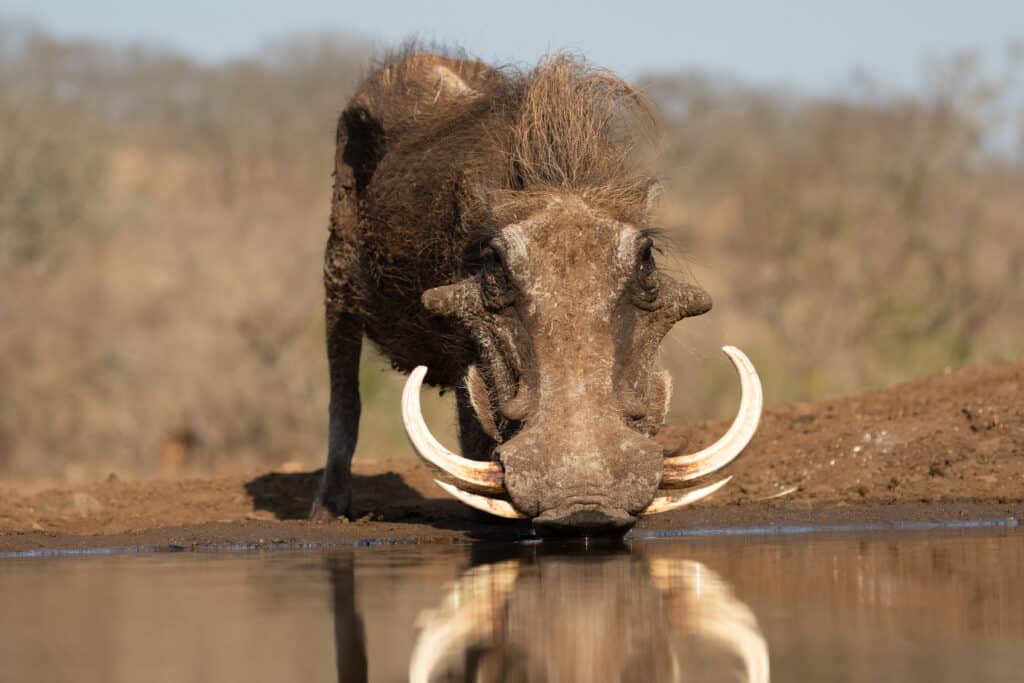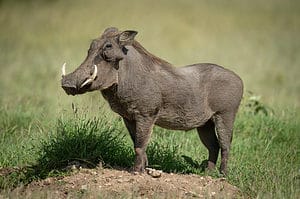In the wild, be careful of your surroundings. One warthog learned the hard way that stopping for a mid-day drink requires vigilance when a crocodile came up out of the water.
Warthog Learns the Hard Way to Look Before You Drink
Three warthogs stand at the edge of a watering hole. Meanwhile, a crocodile approaches in the river. Although warthogs are herbivores and do not eat other animals, they still have formidable tusks that they can use for defense. Warthogs eat roots and often dig for them in the muddy banks near the water. They drink from the water, unaware that a crocodile is just moments away from coming up. In a burst of movement, a crocodile captures one of the warthogs in its powerful jaws. The other two run away.
Then, a brief struggle begins as the warthog tries to get away. After just seconds, the crocodile pulls the warthog into the water. It is muddy and brown water churns around them. The crocodile’s strong jaws keep hold of the poor warthog. They often ambush their prey and pull them under the water. This is clearly what the crocodile is trying to do.
However, the warthog puts up a fight as it struggles to get back on land. Nonetheless, the damage is done. Finally, the crocodile and warthog disappear below the muddy water.

A warthog drinking by the water’s edge can be vulnerable to crocodiles who hide in the water waiting to attack.
©Peter van Dam/Shutterstock.com
Typically, crocodiles often go after prey at the water’s edge. They are able to keep the majority of their bodies underwater as they get close, preventing detection. That’s exactly what happened in the case of this unsuspecting warthog.
This video was filmed in Kruger National Park, located in South Africa. It is a popular place for people to go on safari and see animals, such as this crocodile and warthog, in their natural environments. Many people who visit Kruger learn first-hand about the predator and prey cycle and how animals interact in the wild. Before you visit, it is best to accept that some animals that you see will become meals for other animals.
The photo featured at the top of this post is © Avrand6 / CC BY-SA 4.0 – License / Original
Thank you for reading! Have some feedback for us? Contact the AZ Animals editorial team.






